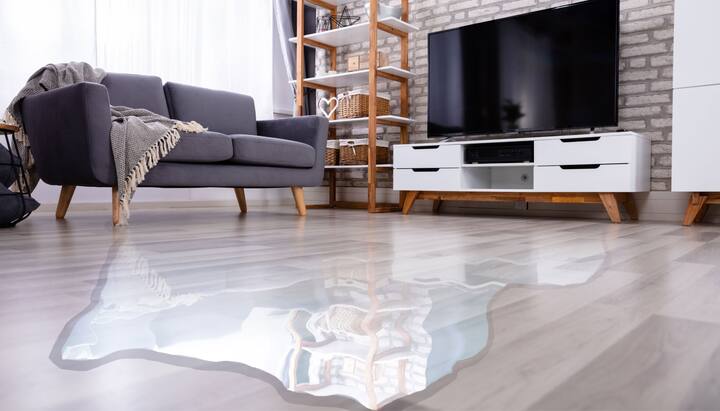
Top Water Damage Prevention Tips
Water damage can be expensive to repair and even more costly when not properly prevented. It affects homeowners, renters, business owners, and property managers alike. Knowing how to identify potential sources of water damage and practicing water damage prevention is essential for avoiding costly repairs. Following these simple tips can help ensure your home or business stays safe from water-related disasters and save you money in the long run.
Water damage prevention: Identifying potential risks
By identifying potential hazards and addressing them before damage occurs, homeowners and business owners can protect their investments from water-related disasters. The first step in preventing water damage is understanding the sources of potential risk. Common sources include:
- Faulty plumbing
- Leaking appliances
- Broken windows or roofs
- Inadequate drainage
These are all areas that should be monitored regularly for signs of wear and tear or other potential problems. Additionally, it is imperative to know sudden weather changes, such as heavy rainstorms or large snowfalls which may result in flooding. Finally, it is essential to ensure all systems are properly maintained and repaired when necessary. Regularly inspect pipes for signs of leakage; replace broken seals around windows; check gutters and downspouts for blockages; clean out debris from drains; and repair any roof damage promptly.
Home maintenance habits
Home maintenance habits are key to water damage prevention. Regularly inspecting and replacing worn parts of plumbing fixtures, such as faucets and toilets, can help mitigate damaged pipes. Additionally, checking for leaks or faulty seals in washing machines, dishwashers, and other appliances is crucial to avoid costly repairs later on. Moreover, proactive steps should be taken to identify any underground water sources that could pose a flooding risk. This could involve examining the yard for signs of pooling or standing water after heavy rainfalls. By taking these steps and following home maintenance habits regularly, homeowners can protect their property from water damage.
Water damage prevention requires regular inspections
Regular inspections should be part of any home maintenance routine to practice water damage prevention. Homeowners should have their plumbing systems and appliances checked annually. In addition, they should inspect potential water sources such as:
- Sinks
- Toilets
- Showers
- Washing machines
- Refrigerators
- Dishwashers
- Water heaters
Regular inspections can help identify areas of potential concern before they become major problems that require costly repairs or replacements later on. Taking water damage prevention steps now can save homeowners money in the long run and protect them from unnecessary water damage in the future.
Water damage cleanup ensures an emergency preparedness plan
Creating an emergency preparedness plan is essential to practicing water damage prevention. The plan should include the identification of potential risks and steps to take before, during, and after a water emergency. When crafting a water emergency preparedness plan, it is imperative to consider unforeseen hazards such as floods, storms, blocked drains or sewage systems, and improperly installed plumbing. Staying informed about changing weather conditions is also essential to anticipate flooding. Once potential risks have been identified, steps can be taken to reduce the impact of a water emergency. Regularly checking pipes for signs of corrosion or wear is also beneficial in ensuring plumbing systems function properly.
Professional assistance
Having an emergency preparedness plan in place is a crucial step in water damage prevention. If a water-related emergency occurs, professional assistance is essential. Professional water damage remediation experts can repair and restore a home or business quickly and efficiently. Professional assistance is specialized and beneficial for several reasons.
- First, experienced technicians utilize advanced technology to detect hidden moisture sources that cause mold growth, rot, and other structural damage. They can also identify current and potential health hazards associated with water damage.
- Second, they know how to properly assess the severity of the problem and develop a comprehensive solution that meets all safety requirements while minimizing costs.
- Third, they are equipped with specialized drying equipment such as air movers and dehumidifiers. This speeds up the drying process significantly, preventing further damage caused by prolonged dampness in interior spaces.
Water damage remediation professionals also provide invaluable advice on preventing future water-related emergencies. Water damage prevention steps can ensure minimal or no damage from water-related incidents.
Consider Placer County Restoration Pros for expert water damage prevention services
Creating an emergency preparedness plan is a key step toward efficient water damage prevention. By taking preventative measures such as these, homeowners can ensure they are well-equipped to handle potential water damage-related issues. Through building awareness of potential risks, having consistent home maintenance habits, and creating an emergency preparedness plan, homeowners can put themselves in the most effective position to protect their homes from water damage. Consider Placer County Restoration Pros for expert water damage repair assistance in your home!